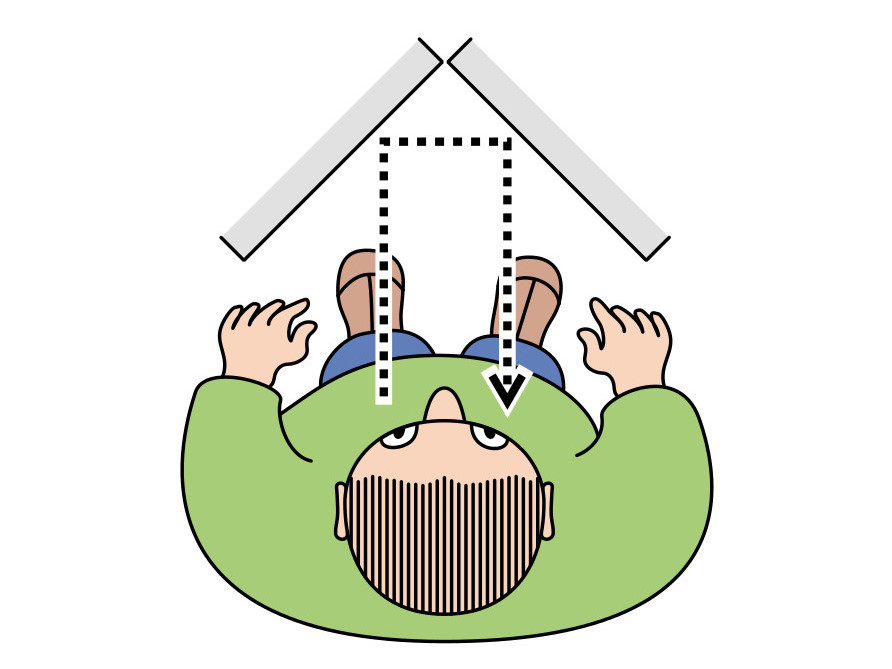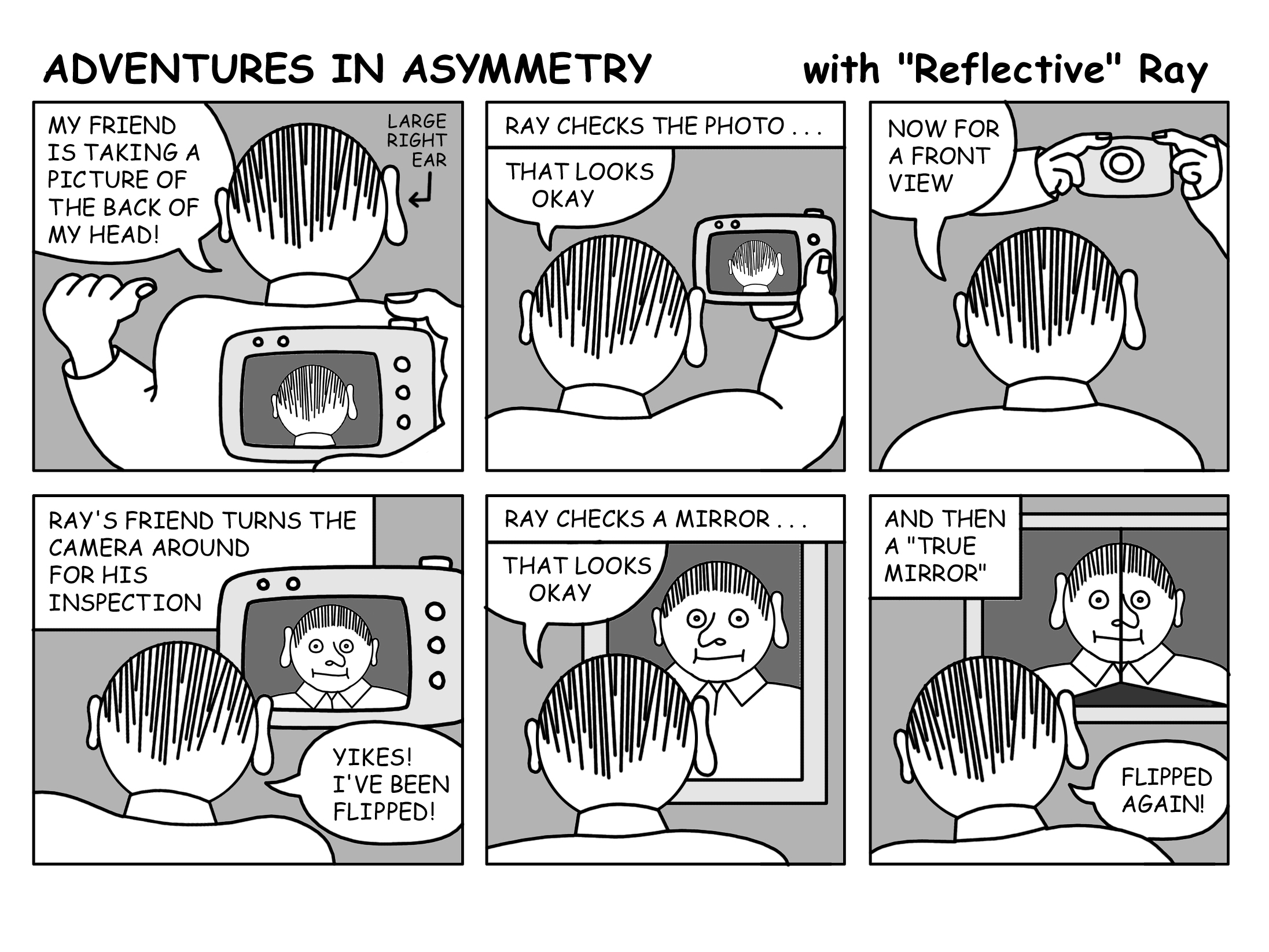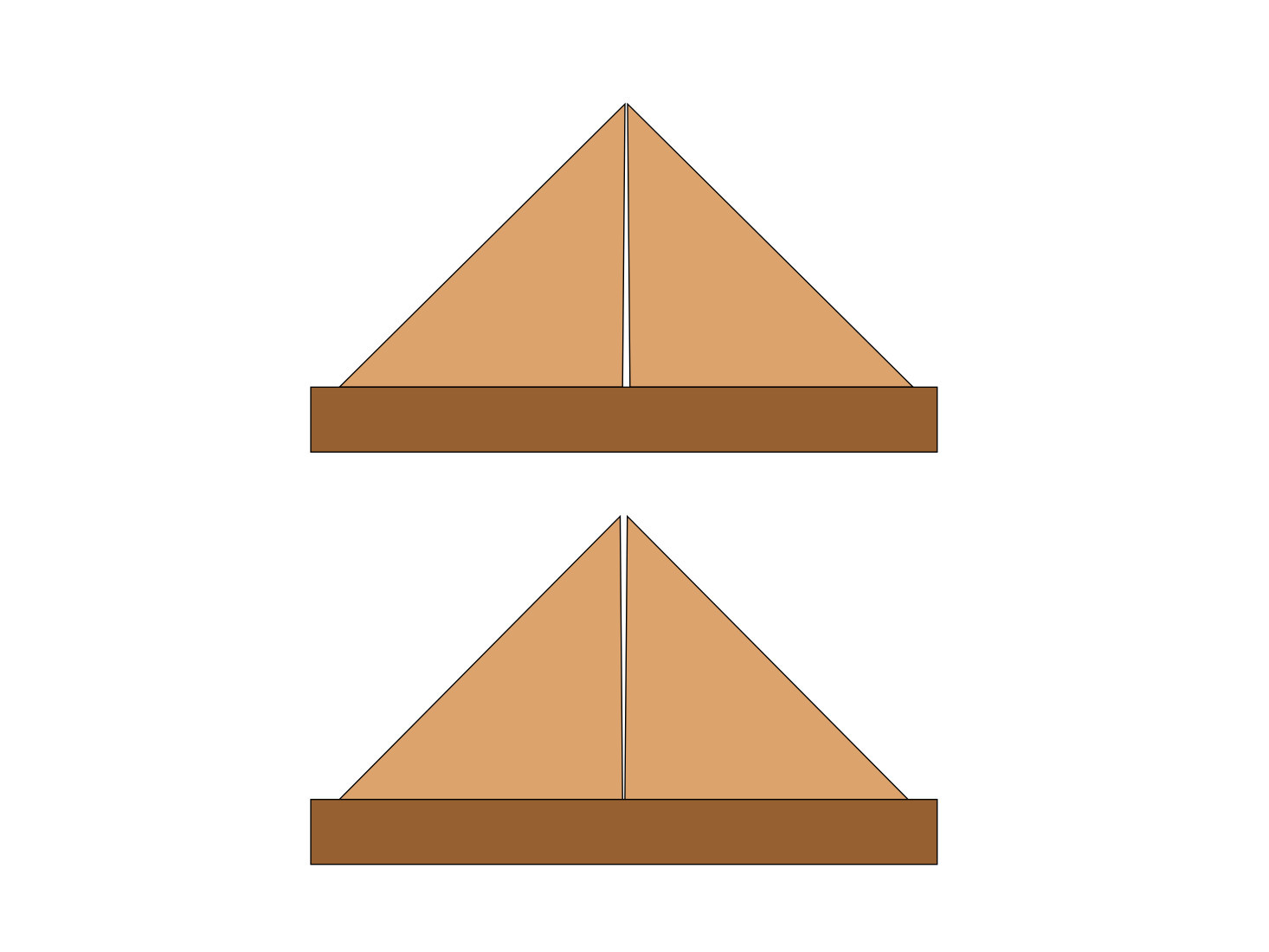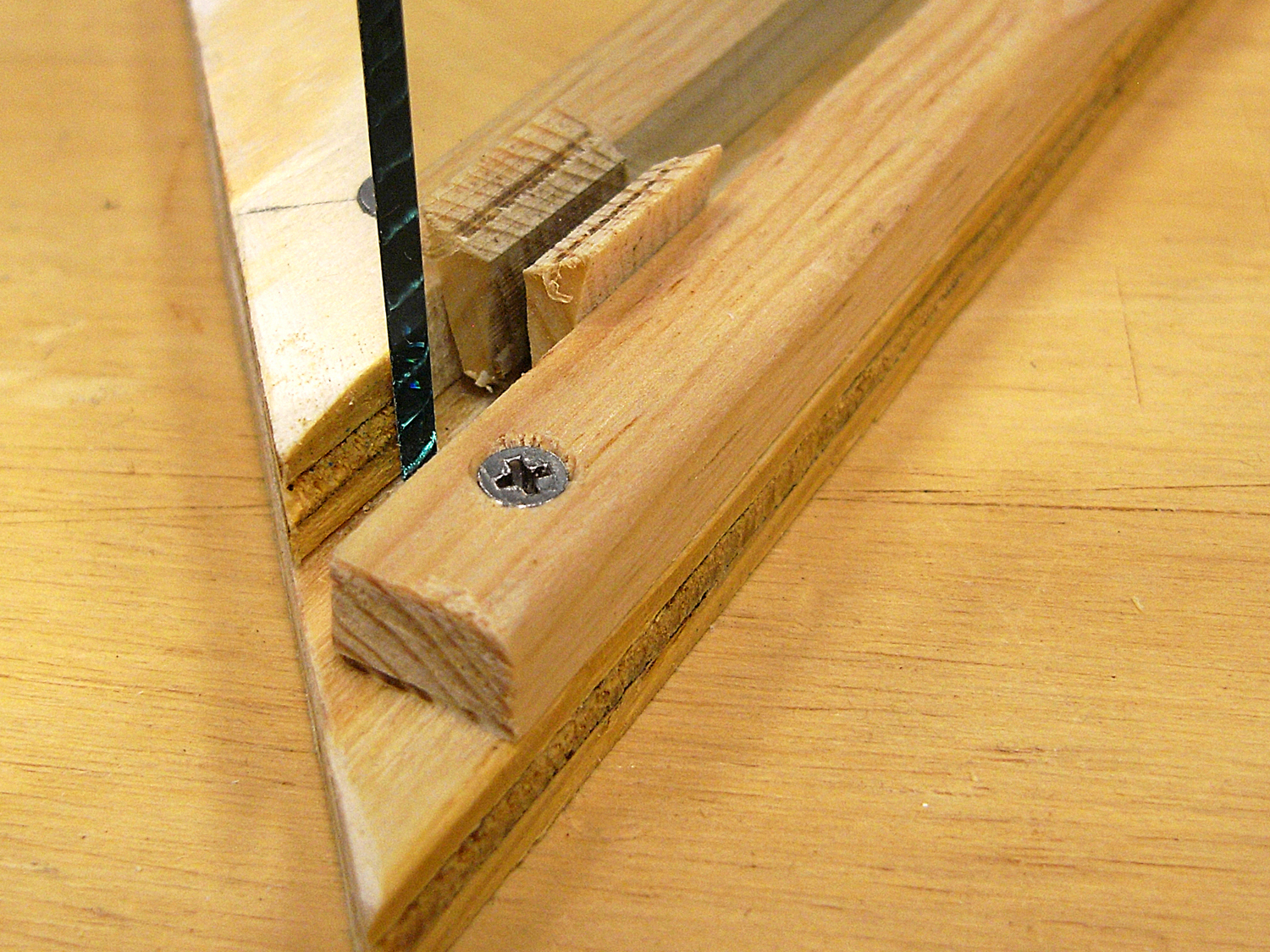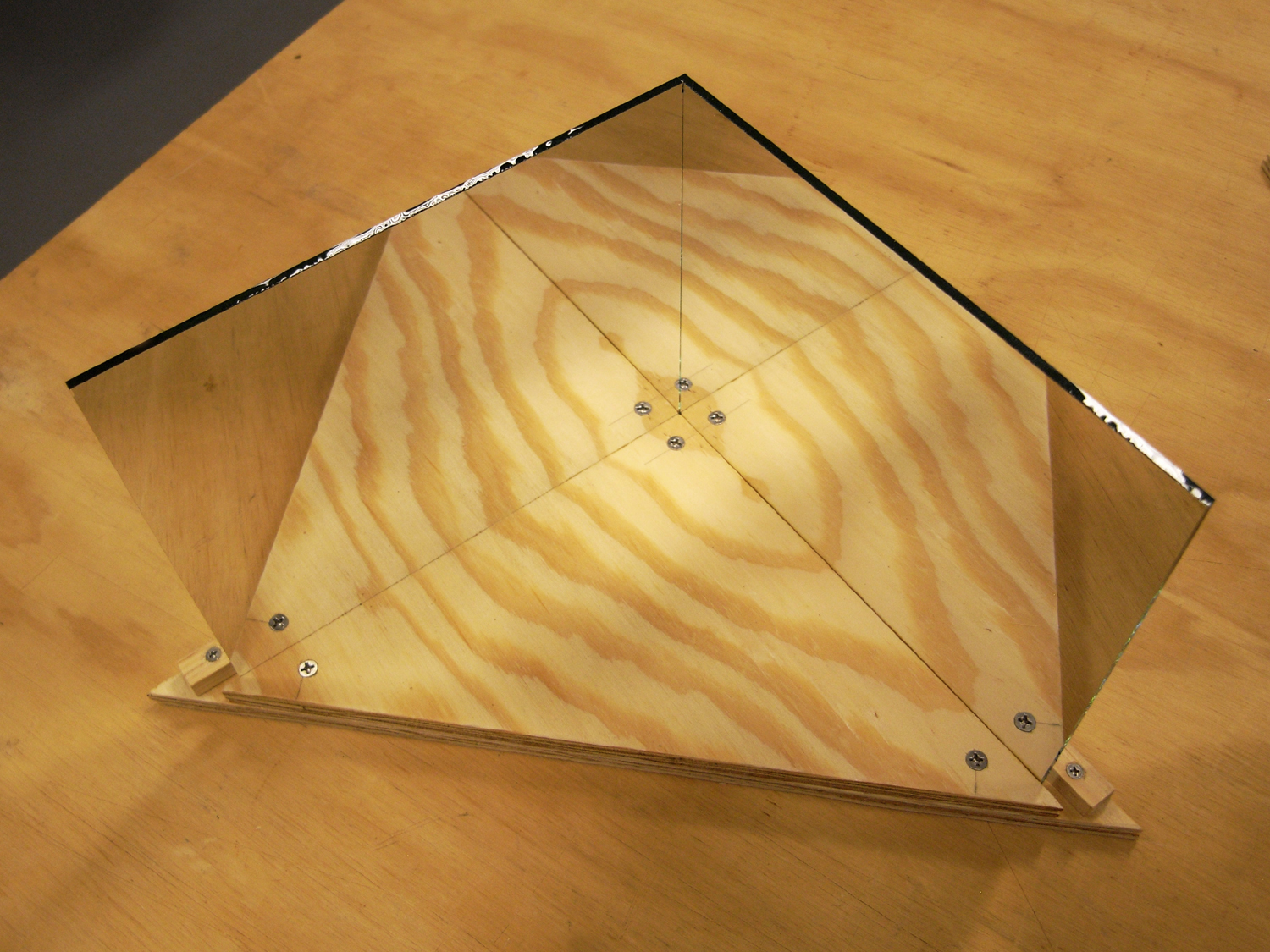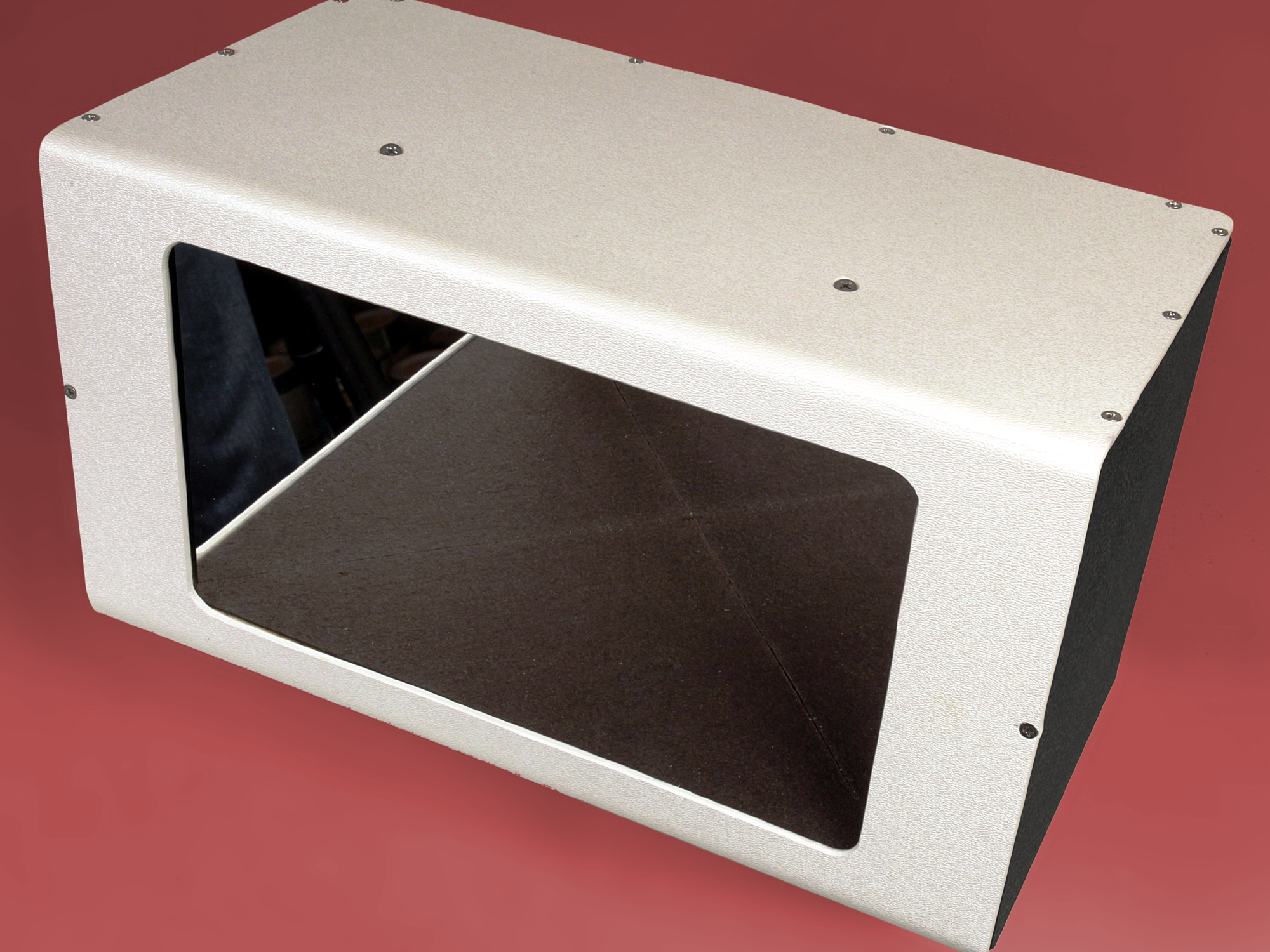Most people believe that a mirror rotates your image from left to right, but this is not really correct. To clarify this confusing issue, I’ve sketched the story of an intrepid investigator named Ray, who reflects on it in some depth. Ray happens to have a right ear that’s bigger than his left, which makes it easy to see whether his image has been flipped. The lesson from this story is that when a photograph is turned around from the position in which it was taken, the image turns with it. Therefore, whether it looks as if your face is flipped depends on your point of view.
Can we create a mirror image that looks the same as a photographic image, so you see yourself as others see you? Two mirrors oriented at 90° to each other can produce this effect. Light from your face bounces off the first mirror and then the second mirror, rotating a total of 180° before it returns to your eyes. This combination of mirrors is often known as a “true mirror,” although I think of it as an “untrue mirror” because of the rotation that occurs.
Whatever you choose to call it, building it is easy enough. You just need a pair of small, rectangular, unframed mirrors, some plywood, and enough glue and screws to hold everything together. The only challenge is to mount the mirrors very precisely.


